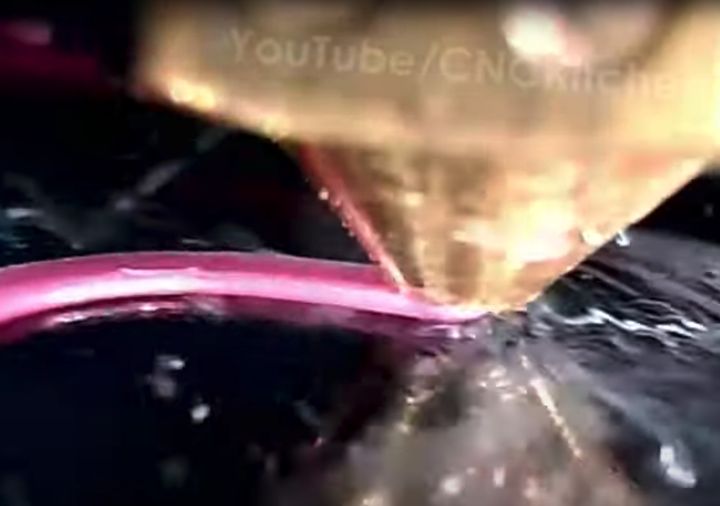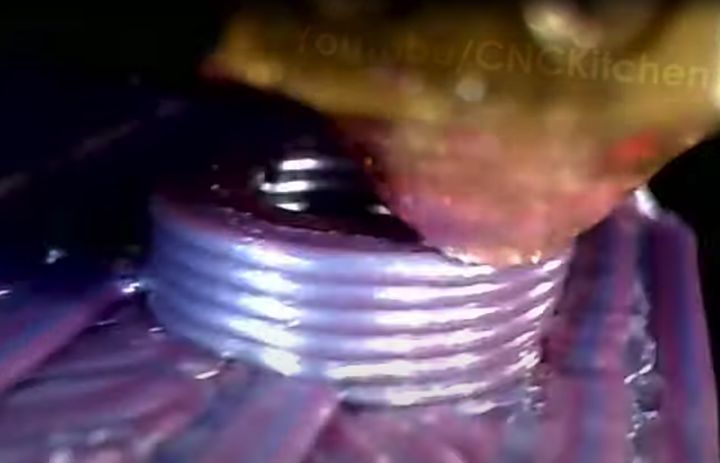
A unique view of 3D printing in action appears in a new video.
Stefan Hermann of the CNC Kitchen YouTube channel published an incredible video this week showing 3D printer FFF extrusion in excruciating close-up detail.
Hermann’s channel is one I often watch as he posts all manner of 3D print experiments, often with conclusions backed up by scientific measurements. I’ve learned much from his work, and you can too.
While Hermann typically posts videos of specific experiments, this latest video is quite a departure, as it is simply a long video of an entire 3D print.
But there’s a big difference: Hermann attached an endoscope camera to his hot end to show a close-up image of the nozzle in action during the entire 50m print job. The nozzle is shown moving about, extruding plastic or skipping to the next extrusion position, as it prints a #3DBenchy.
This is such a different perspective it’s hard to describe. It’s like going into another world to see details never before realized.

Normally we perform 3D prints and wonder why there was stringing on this section, or why these layers didn’t laminate properly. Sure, there are conceptual reasons for mistakes, but you don’t really SEE them happening.
With the hot end-endoscope view, you CAN see things happening directly. With this close-up view you can intimately understand why stringing occurred and why it did not.
For one thing, the microscopic extrusion view seems a lot “wetter” than one might imagine. The freshly extruded material is seen to flow in ways definitely not visible from our normal macro viewpoint.
Keep in mind that the nozzle in the video is only 0.4mm across, and the extruded mass is about the same tiny width. However, in the video it appears as a massive train of material, far larger than it really is.
Here’s the full video:
Several commenters online found the video eerily fascinating and could not stop watching. I can appreciate that, as it really is something you can’t take your eyes from.
Is there more to this, though? Hermann says he uses this rig to help debug problematic extrusion jobs, and that’s probably a good use for the system.
However, perhaps this could be automated in some way? There are several AI-based systems that attempt to monitor 3D print jobs, like the Spaghetti Detective. What if this type of monitoring system was used on the endoscope view? Could we detect print mistakes that would otherwise be undetected? Could 3D print quality be increased?
What if we reverse-engineered 3D print parameters based on the extrusion view? Could we develop the absolute best possible extrusion settings in this way?
I’m not sure any of that is actually possible, but it is at least plausible. I think this is an area that could be explored in a lot more depth.
Via YouTube
